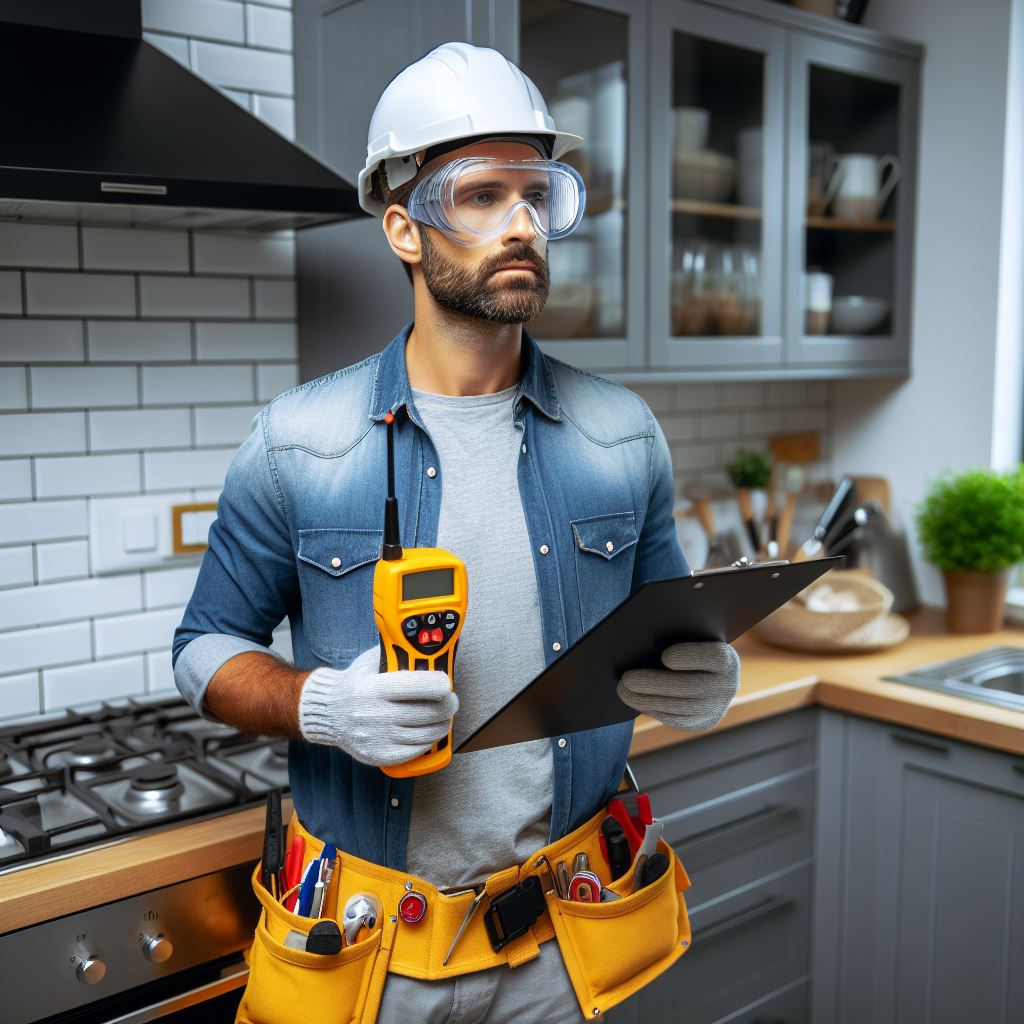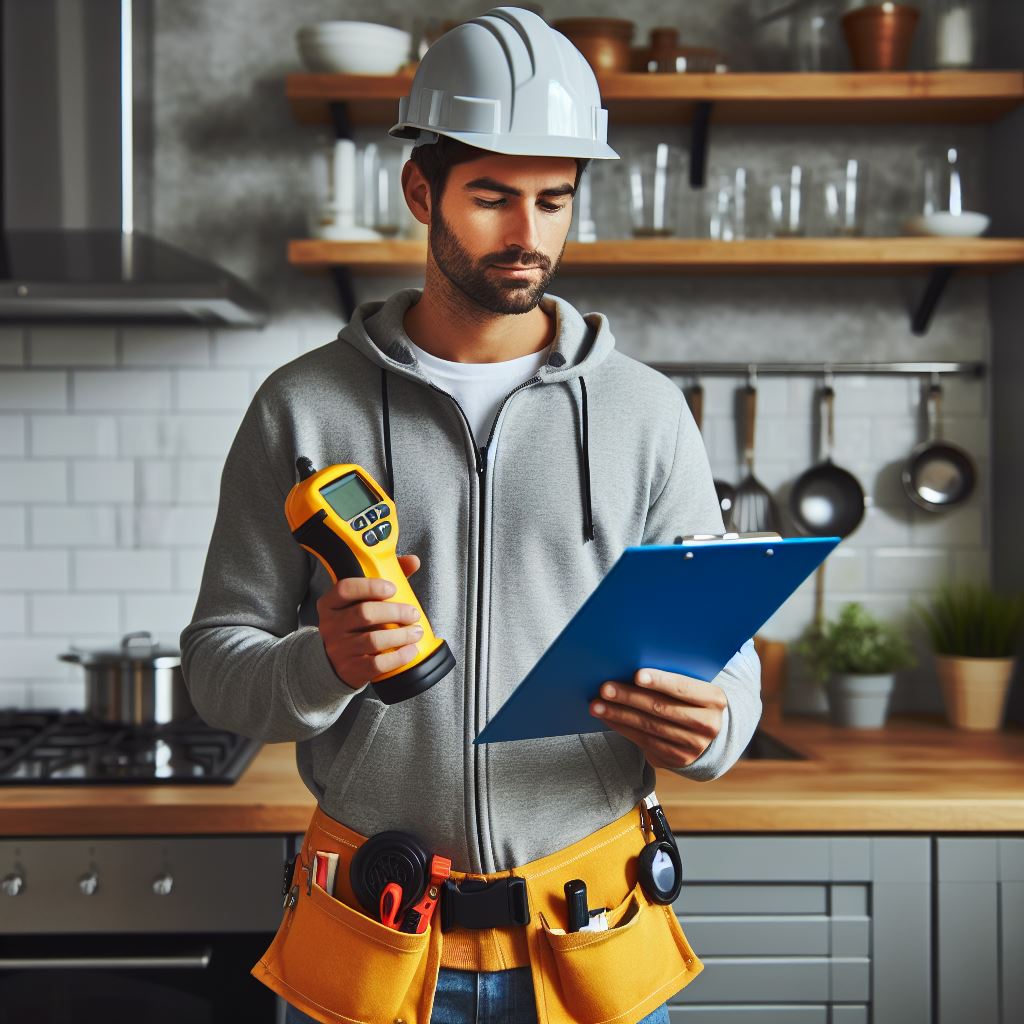A gas detector is a device designed to detect the presence of various gases in the surrounding environment. It is an essential tool used in many industries and settings to ensure the safety of individuals and prevent potential hazards. Gas detectors can detect a wide range of gases, including but not limited to carbon monoxide, methane, hydrogen sulfide, and oxygen. These devices work by analyzing air samples and providing audible and visual alarms when certain gas concentrations exceed predetermined levels. Gas detectors are commonly used in industries such as mining, oil and gas, construction, and manufacturing, as well as in residential settings to monitor gas leaks from appliances such as stoves and heaters. They play a crucial role in maintaining a safe and healthy environment by alerting individuals to the presence of harmful gases, allowing for timely action and prevention of accidents or health issues.
Importance of Gas Detectors in Home Inspections
Gas detectors play a crucial role in home inspections, as they are essential tools for ensuring the safety and well-being of homeowners. These devices are designed to detect the presence of harmful gases, such as carbon monoxide and natural gas, which can pose serious health risks if left undetected. In this article, we will explore the importance of gas detectors in home inspections and how they are used to ensure the safety of residential properties.

One of the primary reasons why gas detectors are essential in home inspections is their ability to detect the presence of carbon monoxide (CO). Carbon monoxide is a colorless and odorless gas that is produced by the incomplete combustion of fossil fuels, such as gas, oil, and coal. When inhaled, carbon monoxide can bind to hemoglobin in the blood, reducing its ability to carry oxygen to vital organs. This can lead to symptoms such as headaches, dizziness, nausea, and even death in severe cases. Gas detectors equipped with carbon monoxide sensors can quickly identify the presence of this deadly gas, allowing homeowners to take immediate action to prevent harm.
Another gas that gas detectors are designed to detect is natural gas, which is commonly used for heating and cooking in residential properties. Natural gas is highly flammable and can pose a significant risk if there is a leak or malfunctioning appliance. Gas detectors equipped with natural gas sensors can detect even the smallest leaks, alerting homeowners to potential hazards and allowing them to take appropriate measures to address the issue. This can prevent gas explosions, fires, and other accidents that can cause extensive damage to property and endanger lives.
Gas detectors are also crucial in identifying other potentially harmful gases that may be present in homes. For example, volatile organic compounds (VOCs) are chemicals that can be released from various household products, such as paints, cleaning agents, and furniture. Prolonged exposure to VOCs can lead to respiratory problems, allergic reactions, and even cancer. Gas detectors equipped with VOC sensors can detect the presence of these harmful chemicals, enabling homeowners to take steps to reduce their exposure and improve indoor air quality.
During a home inspection, gas detectors are typically used in various areas of the property to ensure comprehensive coverage. These areas include the kitchen, where gas leaks from stoves and ovens are common, as well as utility rooms, where gas-powered appliances such as water heaters and furnaces are typically located. Gas detectors are also used in bedrooms and living areas, as carbon monoxide can quickly spread throughout a home if there is a malfunctioning heating system or blocked chimney.
In conclusion, gas detectors are indispensable tools in home inspections, as they play a vital role in ensuring the safety and well-being of homeowners. These devices are designed to detect the presence of harmful gases, such as carbon monoxide and natural gas, which can pose serious health risks if left undetected. By promptly identifying the presence of these gases, gas detectors allow homeowners to take immediate action to prevent harm and ensure the safety of their residential properties. Therefore, it is crucial for home inspectors to utilize gas detectors during their inspections to provide a comprehensive assessment of a property’s safety.
Common Gas Leaks Found During Home Inspections
Gas detectors are an essential tool used during home inspections to identify and detect common gas leaks. These leaks can pose serious health and safety risks to homeowners if left undetected. In this section, we will explore some of the most common gas leaks found during home inspections and how gas detectors are used to identify them.
One of the most prevalent gas leaks found in homes is natural gas leaks. Natural gas is commonly used for heating, cooking, and powering various appliances. However, if there is a leak in the gas line, it can lead to a buildup of gas in the home, which is highly flammable and can cause explosions or fires. Gas detectors are used to detect the presence of natural gas by measuring the concentration of gas in the air. They can quickly alert the inspector if there is a gas leak, allowing for immediate action to be taken to rectify the situation.

Another common gas leak found during home inspections is carbon monoxide (CO) leaks. Carbon monoxide is a colorless, odorless gas that is produced by the incomplete combustion of fossil fuels. It is highly toxic and can be deadly if inhaled in high concentrations. Gas detectors equipped with carbon monoxide sensors are used to detect the presence of this gas. These detectors can provide an early warning if there is a CO leak in the home, allowing homeowners to take the necessary steps to prevent carbon monoxide poisoning.
Propane gas leaks are also frequently encountered during home inspections. Propane is commonly used for heating, cooking, and powering appliances in homes that are not connected to natural gas lines. However, if there is a leak in the propane system, it can lead to a dangerous buildup of gas. Gas detectors are used to detect propane leaks by sensing the concentration of propane in the air. This allows inspectors to identify any leaks and ensure that the propane system is functioning safely.
In addition to these common gas leaks, gas detectors are also used to detect other gases that may be present in homes. For example, methane gas leaks can occur if there is a problem with the sewage system or if there is a leak in the underground gas lines. Gas detectors can quickly identify the presence of methane gas, allowing for prompt action to be taken to address the issue.
Overall, gas detectors play a crucial role in home inspections by helping to identify and detect common gas leaks. They provide an early warning system that allows homeowners and inspectors to take immediate action to prevent potential hazards. By using gas detectors during home inspections, homeowners can ensure the safety of their homes and protect themselves and their families from the dangers of gas leaks.
How to Properly Use a Gas Detector for Home Inspections
Gas detectors are essential tools for home inspectors to ensure the safety of homeowners and potential buyers. These devices are designed to detect the presence of harmful gases, such as carbon monoxide and natural gas, which can pose serious health risks if not properly addressed. In this article, we will discuss the importance of using a gas detector during home inspections and provide a step-by-step guide on how to use one effectively.
First and foremost, it is crucial to understand why gas detectors are necessary in home inspections. Gas leaks can occur due to faulty appliances, damaged gas lines, or poor ventilation. These leaks can lead to a buildup of gases that are invisible and odorless, making them difficult to detect without the use of specialized equipment. Carbon monoxide, for example, is a highly toxic gas that can cause symptoms ranging from headaches and dizziness to unconsciousness and even death. By using a gas detector, home inspectors can identify potential gas leaks and take appropriate measures to address them.
To properly use a gas detector during a home inspection, it is important to follow a systematic approach. The first step is to ensure that the gas detector is calibrated and functioning correctly. This can be done by following the manufacturer’s instructions and conducting regular maintenance checks. It is also advisable to have spare batteries on hand to avoid any interruptions during the inspection process.
Once the gas detector is ready for use, the next step is to identify the areas that need to be inspected. Common areas where gas leaks may occur include the kitchen, laundry room, and basement. It is important to pay close attention to appliances such as stoves, water heaters, and furnaces, as well as any gas lines or vents in these areas. Additionally, it is recommended to inspect any enclosed spaces, such as crawl spaces or attics, where gases may accumulate.
When using the gas detector, it is essential to follow the manufacturer’s instructions for proper operation. Typically, this involves holding the detector close to the potential source of the gas leak and waiting for the device to indicate the presence of gas. Some gas detectors may emit an audible alarm, while others may have visual indicators or both. It is important to familiarize oneself with the specific features of the gas detector being used to ensure accurate readings.
During the inspection, it is important to be thorough and systematic. Move the gas detector slowly and methodically, ensuring that all potential sources of gas leaks are covered. Pay attention to any changes in the readings or alarms, as these may indicate the presence of a gas leak. If a gas leak is detected, it is crucial to take immediate action by shutting off the gas supply and contacting a qualified professional to address the issue.
In conclusion, gas detectors are indispensable tools for home inspectors to ensure the safety of homeowners and potential buyers. By following a systematic approach and using a gas detector properly, home inspectors can identify potential gas leaks and take appropriate measures to address them. It is important to remember that gas leaks can be invisible and odorless, making them difficult to detect without specialized equipment. Therefore, the use of a gas detector is essential in ensuring the safety and well-being of everyone in the home.
